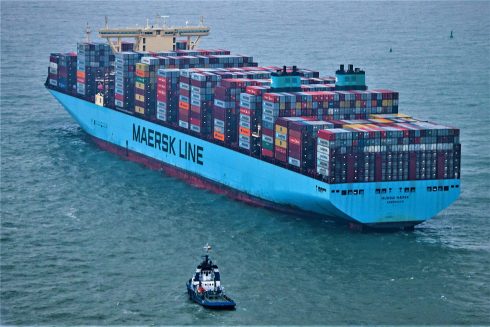AS Yemen’s Houthi militants attack cargo vessels in the Red Sea in response to Israel’s bombardment of the Gaza Strip, experts warn that the disruption of global trade may lead to increased consumer prices in Europe.
Since November, the Iran-backed group, which aligns itself with Hamas, has been attacking ships in the Red Sea, triggering a global trade crisis as shipping companies divert vessels around the southern tip of Africa to avoid the hostile Bab-el-Mandeb Strait.
The 30-kilometre waterway — whose name translates to “the Gate of Tears” — connects the Indian Ocean to the Mediterranean and Red Sea via the Suez Canal, and sees the passage of between 10 and 20% of global trade.
It’s a crucial trade connection between Asia and Europe that’s become a warzone in recent weeks, forcing shipping companies to take the alternative southern route, adding 6,000 kilometres to the journey or up to 20 days, depending on the type of ship.
This extra mileage translates to delays and greater costs, such as fuel, which in turn may lead to higher consumer prices, according to Fernando Ibáñez, an academic at the Campus for International Security and Defense in Sevilla.
”This will end up having an impact on the consumer and also implies delays in deliveries, which can be especially sensitive for the industry in some sectors, such as wood, rubber or electronics,” he told Spanish newspaper 20minutos.
Given that global trade moves slowly and the US-led military response has yet to stop the Houthis — despite missile strikes in Yemen and the deaths of at least 10 militants at the hands of US Navy helicopters — the full economic effects of the Red Sea crisis will likely be unfolding for weeks to come.

How serious is the crisis?
According to a January 11 ING report, the number of container ships travelling between Europe and Asia on the Red Sea route is trending downwards.
The first week of January 2024 saw 41% fewer vessels taking the route than in the previous year.
And many of the re-routed vessels are giant, high-capacity ships carrying huge volumes of goods, meaning the impact on trade is inflated.
The shipping intelligence platform Lineranalytica reported on January 9 that 354 ships had been diverted around South Africa’s Cape of Good Hope since December 15, accounting for some 80% of vessels moving between the Atlantic Ocean, Indian Ocean and Mediterranean Sea.
Danish shipping giant Maersk, which moves a sixth of the world’s container transport, has rerouted all of its vessels since the Maersk Hangzhou was attacked in late December, “for the foreseeable future,” its press statement reads.
Some diverted vessels aren’t expected to arrive at their destinations until late April.
And after suffering attacks on its MSC United VIII vessel in December, the Mediterranean Shipping Company (MSC) has done the same, while the ship tracker on the German shipping company Hapag Lloyd’s website shows nearly all of its vessels have been diverted.
What are the economic effects?
With food prices in Spain finally beginning to stabilise after a period of prolonged inflation, there’s concern among experts that the Red Sea crisis may lead to another inflationary period in Europe.
According to the ING report, as a result of the Houthi attacks, the cost of transporting a 40-foot container from Shanghai to Rotterdam skyrocketed to $4,400 from just $1,170 in late December.
Though this increase doesn’t come close to matching those seen during the pandemic, when shipping costs more than tripled in some places, such a price surge could have far-reaching consequences.
A doubling in shipping prices would increase global inflation by 0.5%, according to a January 12 report from Allianz Trade.
And despite the fact that most ships have been diverted, many vessels have likely been hit with astronomical insurance premiums, which experts have said may eventually inflate consumer prices.
“Exporters and importers have already begun to receive invoices with a $2,000 surcharge per container,” Jordi Espin, general secretary of Transprime, the Spanish division of the European Shippers’ Council, told 20minutos.
“When the invoices are paid and the new rates are estimated, the end customer will end up paying it,” he continued.
Still, the shipping industry is relatively stable and has room to absorb price increases, so the Red Sea crisis is unlikely to provoke severe consequences for consumers.
“Global shipping costs have jumped and oil prices are up by a few dollars per barrel, but if this is the worst of the impact, which seems most likely, then it will not materially translate into higher consumer price inflation globally,” economist Mark Zandi told Bloomberg.
The shipping industry is resilient, said Francisco Aranda, president of supply chain logistics company UNO Logistics to La Razon, so for now there’s no cause for panic.
“For the moment we have been cushioned by the flexible margins with which the companies work,” he said.
However, he added that the longer the crisis continues, the greater the chance its effects will show on the supermarket shelves.
READ MORE


